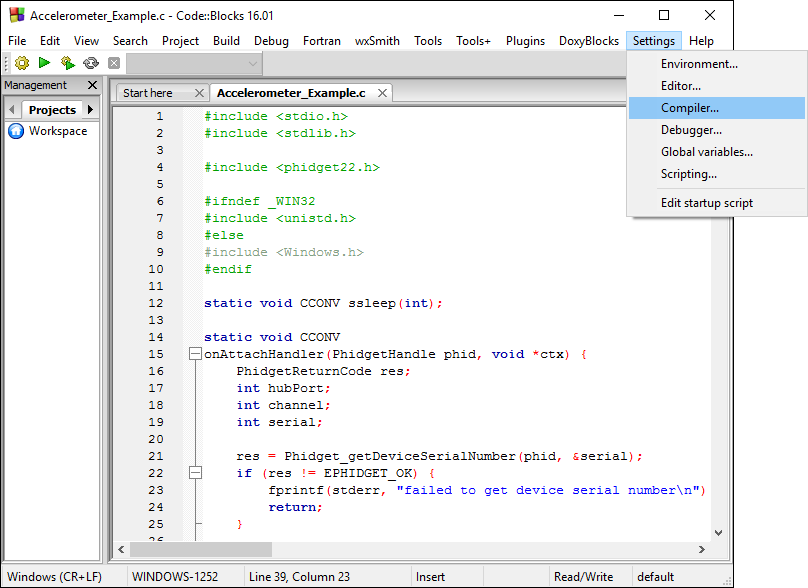Serial Port Programming In C Language

>>And would the above sample program work in both C# and C++? Absolutely not. The C++/CLI syntax was introduced in Visual C++ 2005. If you absolutely must use VS 2003 then forget about C++/CLI. The managed C++ code in 2003 is now known as 'oldsyntax'. You don't want to go there. Check the File, New, Project options in the VS 2003 to see if it supports MFC.
Serial Port Programming using Win32 API. In this tutorial we will learn How to communicate with an external device like a microcontroller board or modem using the Serial port of a windows PC(Windows XP,7). The software is written using C language and communicates with the Serial Port using Win32 API. Way of implementing PC-to-PC commu. Nication via RS-232 serial port using C. Implementing the asyn. Chronous serial communication this way does not. Require the reader to be familiar with serial. Moreover, the speed of data transfer is also. Greater and the function used for serial program.
I.e., to see if it is not the Express Edition. If it does support MFC that is the best C++ way to go. Let the wizard build you an MFC dialog-based app and start learning. This will be a great help: If not, I suggest C# is for you. Visual C++ 2005, 2008, 2010 has support for serial port communication. Since you are a novice I suggest you start a simple form application that displays hello messages. If you done programming before, after installeing Visual Studio Express, try some tutorials (basics) to get the feeling how it works.
Then go to library and borrow books such as Microsoft Visual c++ 2005 Express Edition Programming. In a matter of fact, I am doing exactly what you do. However, I am working with Zilog not PIC.
I managed to write a simple terminal that receives and sends data to microcontroller, however, it still needs some ironing. I am using visual studio 2008 express. (B)inary (U)niverse. That link is to the Win32 API functions for serial communication. The Win32 APIs are C language, easily called from C++ as well. This link (and the sample code it provides) is a Win32 API level GUI that works with the serial port: A Windows Forms application is a whole different world, based on using the.NET library and the C++/CLI language.
And if you want Windows Forms, the general recommendation is to use the C# language rather than C++/CLI. OK let me get this straight.
This link seems a good resource, so to use it I should be writing in C? Or can I use everything in this link with C++ (and if not how will I know which is not able to be used?) Also, I thought C is not what is used to write a GUI? If I can use everything in this link by writing in C++ can I use Visual C++ Express to do so, and how do I begin doing that? Also your last statement is confusing. If a Windows Form application is based on using the C++/CLI language, why is the general recommendation to use C#?
Be careful not to confuse C and 'native' C++ with either C++/CLI or C#, which are distinct programming languages. The WIN32 API was originally (and still is) a C API, and can be used for GUI programming. You can use the WIN32 C API functions in native C++ directly. However, the Express edition doesn't contain the MFC libraries you will need to create a GUI easily (it can be done, but not so easily). As for Scott's last statement, look at it again carefully in the light of my first paragraph. Answering policy: see profile.
Yes, you can use that sample program with Visual C++ Express. That sample program represents Win32 API programming, which is fundamentallly in C, and it is the way Windows GUI programs were first written. It can still be done that way. Over the years Microsoft has developed more and more layers on top of the API to make programming easier. How To Apply For Duplicate Driving License In Haryana. First they added MFC, which is fundamentally C++, but still offers transparent access to the API level. The MFC library is only available in the paid-for versions of Visual C++, not Express.